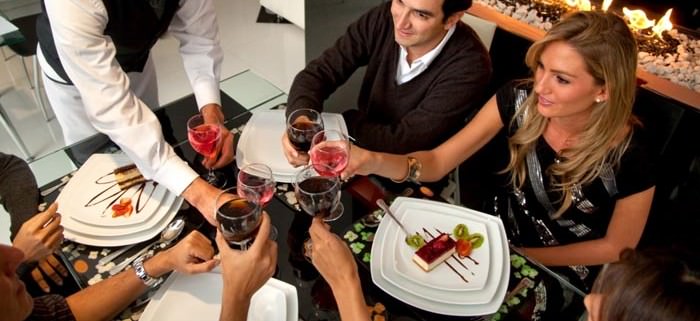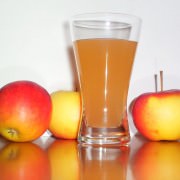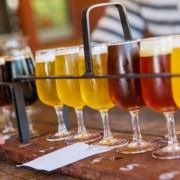Dessert and Drinks – A Sweet Treat for Consumers and Restaurants
Wine, beer and dessert, oh my. This appetizing trend is appearing in restaurants across the country. Tying these beverages to desserts opens new, delicious doors for consumers that have never thought to drink with dessert before. There is an art behind pairing sweet dishes with alcohol and we have the tips to get you started.
The rule of thumb that a dessert must be paired with a dessert wine to enhance the flavor no longer exists. A glass of red wine or a golden ale can do just the trick. Marlo Scott, restaurant owner of Sweet Revenge in New York, approaches drink and dessert pairings loosely, tasting the items to determine what combination will bring out the flavoring without overkill. “I don’t want to do death by sweetness,” she explains. Whether a beer or wine, Scott takes the time to identify the tasting notes that will go hand-in-hand. For example, if a particular dessert has a dominating fruit flavor, she tries to find a beverage that gives off a spice or cream finish. Scott tries to find balance, while also providing unexpected options that intrigue customers.
Pairing wine, beer, or other liquor with a dessert is a great way to expose your customers to a new experience and leave them craving for more. Its a win-win for both parties, as you give customers a fulfilling restaurant visit while increasing your beverage sales. Follow these tips to surprise them with pairings and awaken their sweet tooth.
1. There are three key factors when determining what alcohol will bring out the richness of your dessert: acidity, intensity and sweetness. Acidity in a wine can compliment a fruit dish that has a similar level, or be used to mellow out an extremely sweet dessert. When choosing an intense wine, match it with an equally intense dessert so that one flavor isn’t masked by the other. If you want to stay with a classic dessert wine, make sure that the wine is sweeter than the dessert you are serving.
2. You can breakdown desserts into categories to help you properly match alcohol. Some key sections are vanilla and custards, fruit and spice, caramels and chocolates. If you are unsure of what dessert fits into what category, safer choices include with pairing it with a port or sweet sparkling wine.
3. Predetermine if you want your pairing menu to revolve around the desserts or wine/beer. Whatever you choose, offer selections that match. If you choose champagne specifically, have at least 2 options that differ in some way to reflect the varying consumer palate.
4. If customers are set against dessert, try solely offering a wine as a way to finish off their meal. The wines can range from super sweet, such as an ice wine, to an acidic crisp white. Red wines are not typically suggested, unless they are a late harvest or fortified.
- Sommelier Surge in Restaurants - August 7, 2015
- 3 Up-and-Coming Restaurant Industry Trends - August 6, 2015
- Millennial’s Impact on the Wine Industry - August 4, 2015









